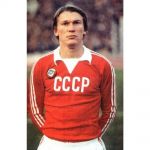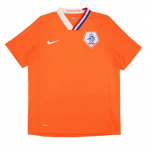
The most beautiful collars in the history of football
After the wide spread in the 90s, the collars are going to return to the big club shirts
April 4th, 2019
A year ago at the presentation of the jerseys for the FIFA World Cup, we noticed how the soccer jersey brands had definitely abandoned the collars in their designs. That particular shape of the jersey, born with the polo and widespread in tennis, was immediately adopted as the official uniform even in the world of football.
The 90s are the moment of maximum spread of the collar, before the gradual disappearance from the beginning of the 2000s, when bold graphics and oversize fits are abandoned in favor of new technology research. The sweaters become less and less bulky and Kappa's Kombat in this sense represents the perfect antithesis to the collar sweaters. Also this season the teams that have chosen the Polo Shirt are very limited. Lazio made the strongest attempt in Serie A, while those of Milan and Napoli are only hinted at. In the Premier League, Liverpool is the only team to have chosen a real collar, complete with buttons and a white finish.
Big brands like Nike, adidas, and PUMA are increasingly focusing on a return to vintage design and the many retro collections are just an example of how the collar could be one of the future trends for soccer jerseys, starting already from next season.
We have thus decided to quickly retrace the history of collars in football, collecting the 30 that we would like to see again in the coming seasons.
Polo collar
By far the most used type, in many variations like the classic one with buttons, the one with the clip buttons on the lapel, with elegant finishes of the same color of the crest - as in the Real Madrid Home '98/'00 shirt - or even with a zipper, like that of the Seville FC worn in the '99/'00 season.

With logos
The idea of putting logos directly on the collar of the uniforms is one of the most interesting suggestions for the shirts of the future, or at least a hope. The examples of the '70s,' 90s and '00s are very fascinating, especially those of Admiral for Tottenham and Wales, but also that of Mizuno for the Watford goalkeeper shirt, worn during the '97/'98 season. It is the goalkeeper models, in many cases made with a high collar, that lend themselves to this type of solution. The logo on the collar could be a way for brands to leave the rest of the shirt more clear, disrupting the patterns we are used to.
With laces
The laced collar is what leads to making us understand the distance between the patterns of the past and the contemporary ones. This type of shape is, in fact, one of the most chosen by the brands for retro collections or celebratory sweaters. Unforgettable is the collar of the yellow-green jersey used by Manchester United from '92 to '94, carried rigorously raised by Eric Cantona, as well as the one of Sampdoria in the same years, with thick and very long cords.
V-neck
The V-neck has not disappeared so drastically from the designs of the football shirts, however, in the past, the brands used it as a real decorative element, much more than in recent years. For national shirts the collar was a way to enclose a particular geometric pattern or the colors of the flag, as in the case of the model used by Nigeria in 1996 or by the Croatian National team at France '98 World Cup. Especially in the second half of the 90s the V-neck was combined with the polo one, creating a knitted space filled in many cases with embroidered logos or writings. An example that Nike should undoubtedly propose again: the training shirt of the Italian national team of the '96/'97 season, as well as that worn by Ginola and Weah in the same period at PSG.













































